
Work in Progress at the Royal College of Art
Masters students at London's Royal College of Art presented their work in progress at an interim show last week called Work in Progress.
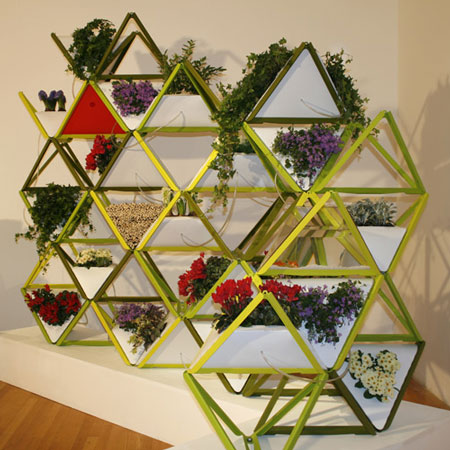
The show included models, early prototypes and conceptual design work from the college's courses in Design Products, Design Interactions, Industrial Design Engineering, Architecture and Goldsmithing, Silversmithing, Metalwork and Jewellery.
Here are a few of the projects, which will be further developed for the final show this summer. Captions are provided by the students:
--
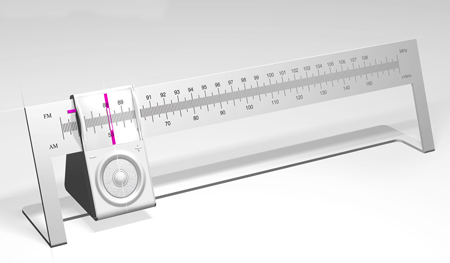
Above: Radio by Mikael Silvanto, Design Products platform 12
"My design utilises technology already widely available in digital calliper tools for a very analogue, informative and honest form and function. Physically the concept is a Radio in a scale instead of a scale in a radio. I find it fascinating and beneficial to move the radio itself, not a button or a slide."
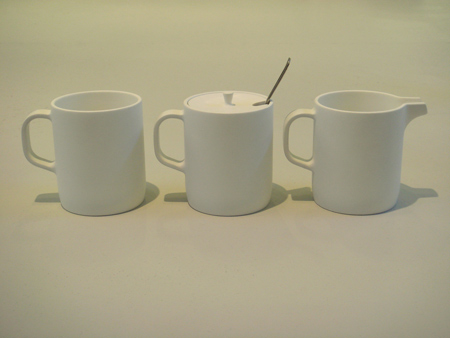
Above: Mugs, Jugs and Sugar Bowls by Jon Harrison, Design Products platform 6
"Handles are great for carrying. A mug is a good size for a sugar bowl. A mug holds a nice amount of milk for tea time. You can comfortably carry two mugs in the same hand."
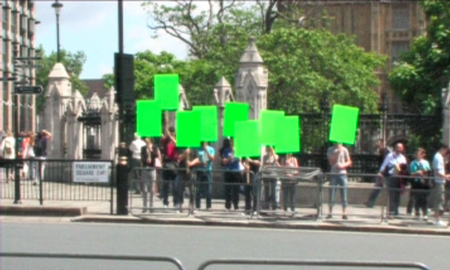
Above: Designing a Protest by Anthony Mullin, Design Products platform 11
"The Serious Organized Crime and Police Act 2005 prohibits anyone staging spontaneous protests within a 1km radius of Westminster's Houses of Parliament. On the 20th of June 2007 at 12 o’clock I led a group of volunteers on a walk through the exclusion zone carrying blank green placards. Utilising ‘Green screen’ technology, I have been exploring how to invite others to add the ‘political content’ during broadcasting."
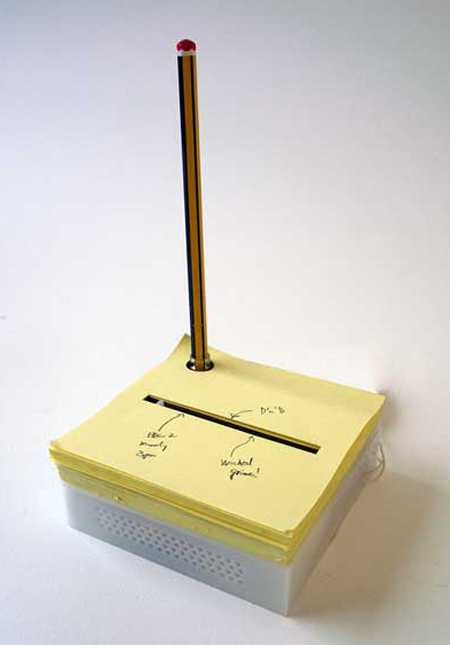
Above: Post it Radio by Yuri Suzuki, Design Products platform 12
“When I lived in North London, I found some nice local radio stations. Some radio stations were licensed and some of them were totally illegal. My radio enables you to make notes about the radio station and mark its position. The radio looks like a memo pad, but underneath is a speaker; the pencil acts as the antenna that controls tuning and volume.”
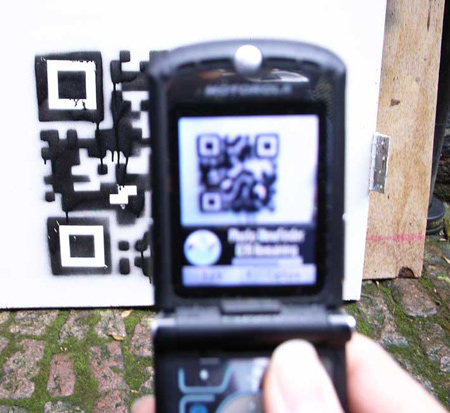
Above: Future Pirate Radio (Graffiti radio) by Yuri Suzuki, Design Products platform 12
“I found a connection between graffiti and pirate radio. Both of these art expressions hack into public facilities. In the case of graffiti, the hacker uses the wall. In case of pirate radio, the hacker uses public radio waves illegally. It can be said that pirate radio is sound graffiti and I would like to propose to combine these two methods of graffiti; The artist can spray a QR code (two-dimensional bar-code) in the street with a stencil. Then when people who find the graffiti take a snapshot of the code with a mobile phone they can find the radio station through the internet.”
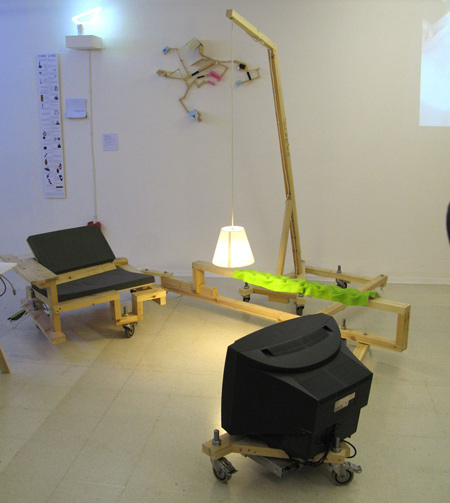
Above and below: Endoskeletons and Exoskeletons by Alon Meron, Design Products platform 10
"One of the distinctions in the world of living creatures is between those possessing an endoskeleton and those with an exoskeleton. The difference, in non scientific terms, is between those whose body is suspended on internal scaffolding and those whose body is contained within a shell."
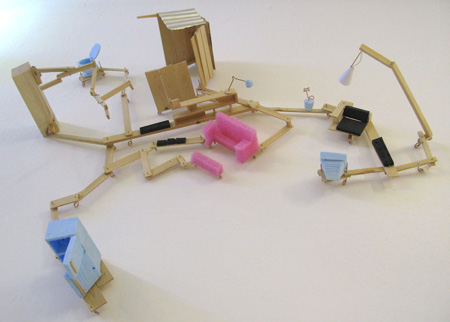
"We are vertebrate creatures and yet our notion of shelter and safety is often manifested in the word 'shell'. Our homes are essentially shells and our daily life is arranged inside their rigid structure. I have taken the living unit and put it on an endoskeleton with limbs to maneuver the different functions of the house. The space is now drawn around the functions rather than contain them. The living house becomes an extension of my limbs rather than a series of containers for my life."
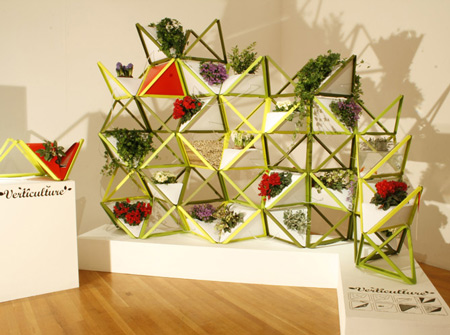
Above: Verticulture by Arthur Schmitt, Sian Smyth, Lucy Helme and Marek Bereza, Industrial Design Engineering
"Urban living means people have little outdoor space. We have created a solution that allows city dwellers to better use this limited space by growing their garden vertically.
Verticulture is a haven for a variety of living things, encouraging the richness of biodiversity in our own back yards.The product is a system of identical frames that can be stacked in different combinations to create a free-standing structure. Into this modules are inserted which can house plants, birds, butterflies and other forms of nature. It's designed to be easy to install and maintain. The integrated irrigation system ensures that the plants are kept perfectly watered.
Verticulture was originally designed for outdoor use but it could also be used indoors."
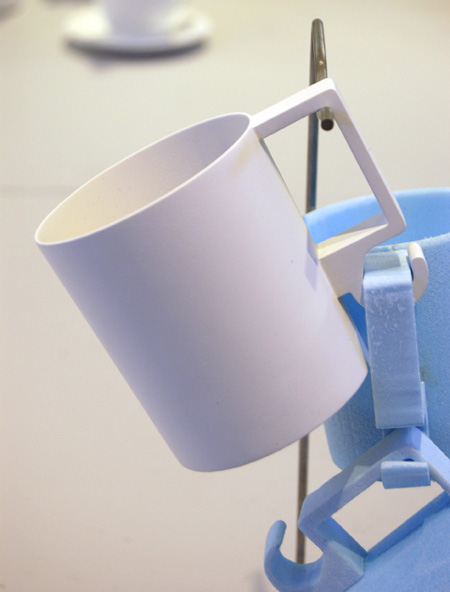
Above: Chain Gang by Simon Denzel, Design Products platform 6
"The main thing that distinguishes a mug from a tea cup is its rather utilitarian character. It is usually largish, heavyish, sturdy and often not very pretty. So altogether it is a rather casual, unpretentious and honest drinking vessel. I attempted to maintain this kind of feeling and appearance by just slightly readjusting the proportions, giving it a clean and straight look and adding, as a practical detail, a hook. Now several mugs can be hung onto one kitchen hook."
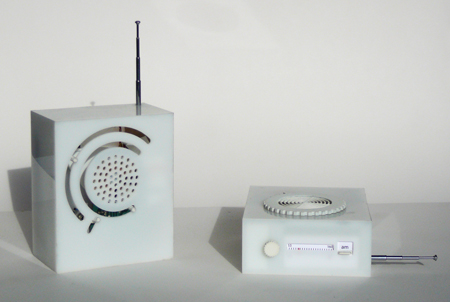
Above: Radios by Jochem Faudet, Design Products platform 12
"In the two radios the related functions are grouped, as a result a more logical and understandable radio in its use:
"Radio 1: All the tuning and volume functions are grouped around the speaker. The On/Off switch and volume function is situated closest to the speaker. The AM/FM switch is situated at the end of the tuning circle, by flicking the switch down it points to the FM numbers situated on the outside of the circle or by flicking the switch up it points to AM numbers on the inside of the tuning semi circle.
"Radio 2: The tuning function and volume function are separated from each other in this concept. To adjust the volume one has to turn the wheel with the integrated speaker, by sliding the AM/FM switch to FM it hides the frequencies of the AM and vice versa."
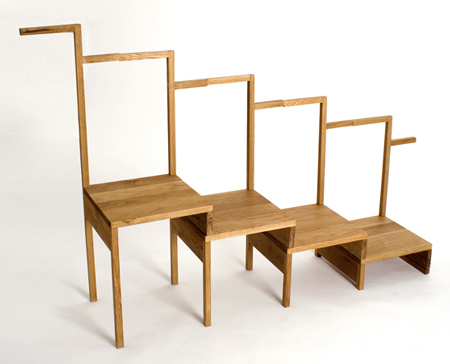
Above: Powerchair by Guillaume Drapier, Industrial Design Engineering
"Without resistance, no power is possible. Discipline begins, first of all, with the distribution of individuals in space
- Michel Foucault in Discipline and Punishment, 1975
Each of these chairs needs another one to exist as a seat."
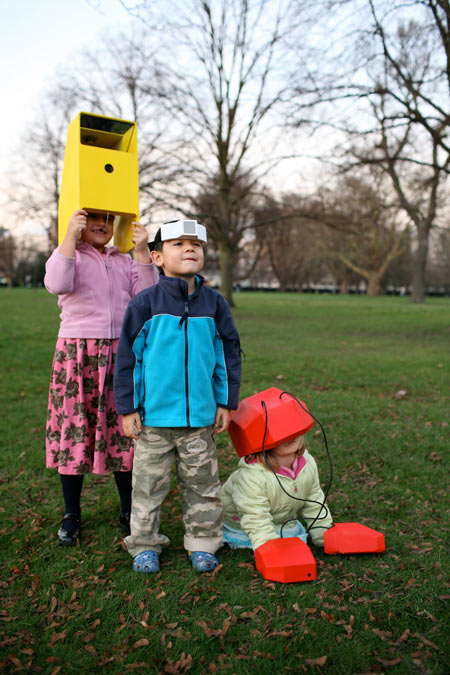
Above: Animal Sense Devices by Chris Woebken and Kenichi Okada, Design Interactions
"Animals have senses beyond human experience. They instinctively sense approaching tsunamis through low frequencies, communicate through pheromones or can navigate through magnetic fields.
"Curiosity and exploration is one of the major desires of children. We believe reality is tune-able and we developed a series of sensory enhancements as experiential prototypes. Can you retrain lost senses and instincts? Can you create an experience of feeling like an animal, even as tiny as an ant? How would kids feel if they can transform through to adults on the same eye level?
"Ant - feeling 50x smaller
Bird - retrain the sense for magnetic fields
Giraffe - child to adult converter"